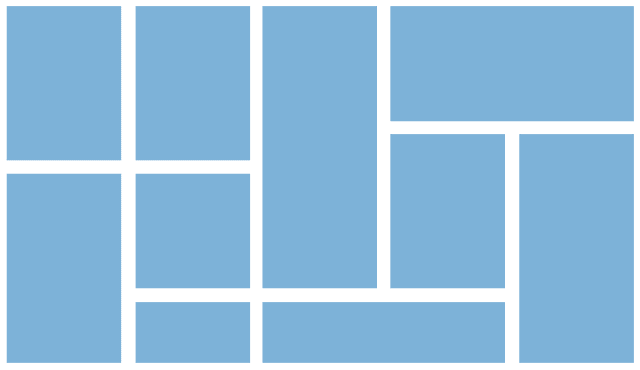- A grid subdivides a page vertically and horizontally into margins, columns, inter- column spaces, lines of type, and space between block of type and images.
- Grid are structure imposed chaos.
- They are a harmonious and reliable system for presenting information.
- They created ordered hierarchies, proportional relationships and clear visual paths for the eye to travel.
Why use grid based design?
- Grid keep your content organized.
- It will make your job quicker.
- Balancing your design will get significantly easier.
- It will enhance your visual hierarchy.
Types of grid:
Manuscript grid:
- They are the simplest and they work well when presenting large continuous blocks of text or images.
Column grid:
- Work well when the information being presented is discontinuous and different types of information can be placed in different columns.
- Work best for more complex problems where columns alone don't offer enough flexibility. The introduce horizontal spaces between blocks of content.
- American architects Albert Mayer and Mathew Novicki were the first architects to be appointed for the project.
- After the death of Novicki in 1950, Le Corbusier was commissioned.
Grid design in websites:
Advantages:
- Highlight the most important elements without over crowding the site.
- It provides stability, making it easier to build the site.
Disadvantages:
- A unique wireframe or set of content requirements may not approve of a grid based approach.
- If there's a complex and heavy content to be displayed, the overly complicated grid units and their congestion can be destroy the underlying unity that the grid provides an create visual clutter in design workspace.
My notes images:














